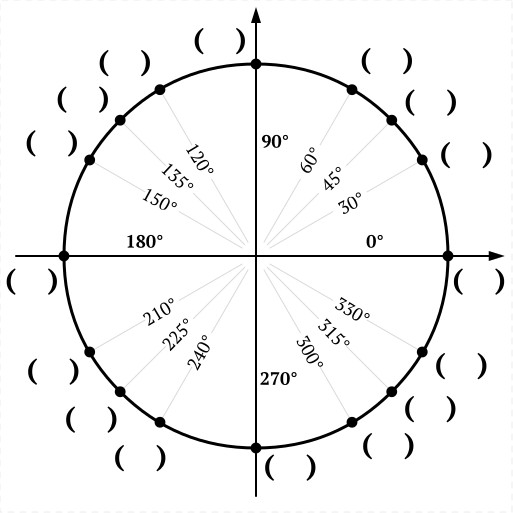DP Physics Doppler Effect
Date posted: 06/20/2019
DP2020 IAs
As seen in: https://www.thinkib.net/physics/page/17437/not-a-checklist
Personal Engagement
Clear evidence of personal engagement, justification of topic and evidence of personal input in design, implementation or presentation:
- Statement of reason why the topic is interesting.
- Context of the research given.
- Interesting use of apparatus.
- Novel method.
- Adaption of equipment to suit requirements.
- comparison of different methods.
- Use of simulations to compare results.
Exploration
Focused research question, relevant background information with highly appropriate method all factors influencing reliability considered with full awareness for safety ethical and environmental issues.
- Research question clearly stated in introduction.
- If applicable variables identified.
- Theoretical background explained.
- Equations derived not just stated.
- Method is described fully showing attention to detail and consideration of controlled variables.'
- Appropriate method (if it worked it was probably appropriate).
- Adaption of method to reduce errors.
- Use of different methods to reinforce conclusion.
- Use of simulations to support theoretical background.
- Mention of factors that can not be controlled.
- Mention of safety issues (not trivialised).
Analysis
Raw data is displayed in a table and processed correctly. Uncertainties are justified and processed. Results are correctly interpreted and the impact of uncertainties is fully understood.
- Relevant raw data collected.
- Raw data is displayed in a clear table.
- Raw data table has correct units and uncertainties in headers.
- There is enough raw data to support conclusion (at least 5 values of independent variable for a linear relationship more for non linear).
- Measurement of dependent variable has been repeated (about 5 times) and mean value calculated.
- Uncertainties calculated from (max -min)/2 or percentages.
- Some processing of data (at least finding mean).
- Results used to show the impact of uncertainties (e.g. intercept, spread of data or size of error bars).
- Data used to find relationship or value.
- Uncertainty in gradient found where appropriate.
Evaluation
A detailed and fully relevant conclusion justified with reference to accepted theory. Strengths and weaknesses are discussed, limitations of method understood and improvements discussed.
- Any calculated values are expressed correctly and compared to accepted.
- Any claims made are justified and backed up with evidence from the results.
- Shows an understanding of how the results support the theory and where it deviates from it.
- Understands how uncertainties affect the results (with evidence).
- Tries to adapt the method to reduce uncertainties or test their impact.
- Highlights weaknesses in the method (with evidence).
- Discusses how to address weaknesses (weaknesses addressed should be those mentioned).
- Discusses what the next step would be given more time.
Communication
Clearly presented, well structured, coherent, focused, relevant with correct use of terminology and few errors.
- Can a it be read in one go without having to re-read sections in order to understand it.
- Correct use of physical terms.
- Organised into short sections with relevant sub titles.
- Not more than 12 pages.
- Doesn't contain irrelevant information.
- Correct units used throughout.
- Derivations and equations correctly performed and well laid out.
Date posted: 06/13/2019
DP2020 Review
Date posted: 05/20/2019
Date posted: 04/15/2019
Date posted: 03/25/2019
DP2020 Banking
Formative/summative practice MS
Lesson Objectives: -To understand the physics of a banked curve -To understand gravitational field strength
Date posted: 01/21/2019
DP2020 Spring Association
Video watched during Wednesday’s class:
Physical properties and their relation to the spring constant
Date posted: 12/05/2018
DP2020 Hooke's Law
Date posted: 11/28/2018
DP2020 Inclined Plane
Watch the videos below:
Body on an incline with no friction
Force components; body on an inclined plane
Understanding the reference frame
Solve the exercises below:
Date posted: 11/05/2018
DP2020 Lab Exemplars
Date posted: 09/25/2018
DP2020 Physical Quantities
Part 1:
Learning Objectives:
-To differentiate between scalar and vector quantities
-To perform vector operations
Assessment Criteria:
-I can define the 3 properties of a vector
-I can add and subtract vectors
-I can do a scalar product of two vectors
Part 2:
Learning Objectives:
-To calculate the distance between two points
-To measure the angle between a vector and the x-axis
Assessment Criteria:
-I can calculate the distance between two points
-I can calculate the angle between a vector and the x-axis
On this class we will solve some vector exercises and continue with vector arithmetic theory.
Vector worksheet
Vector Formative
Today we will see how to measure angles in radians.

Date posted: 09/11/2018
DP2020 Error propagation
Learning Objectives:
-To understand the limitations of measurements and the propagation of uncertainty
Assessment Criteria: -I can carry out error propagation calculations
Date posted: 09/10/2018
DP2020 Measurements and Uncertainties
Learning Objectives:
-To understand the limitations of measurements and the propagation of uncertainty
Assessment Criteria:
-I know the difference between digital and analog instruments
-I understand order of magnitude
-I can write values in scientific notation
-I can carry out calculations in scientific notation
-I can identify significant figures
-I can carry out error propagation calculations
*Go to google classroom and complete the assignment
